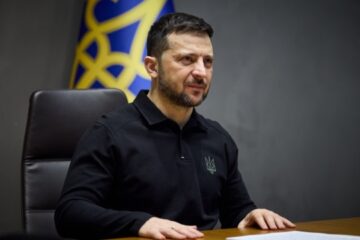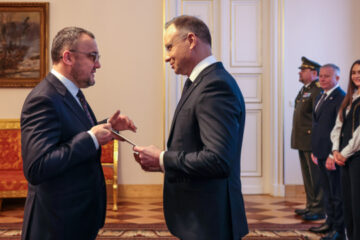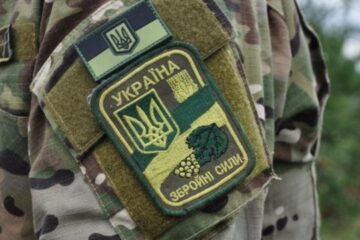
When Vladimir Putin unleashed his forces on Ukraine in 2014 and then again in 2022, the Kremlin insisted it was acting to stave off an existential threat: NATO expansion. In truth, NATO is, and always has been, a defensive alliance—established in 1949 to contain the Soviet Union and, later, to deter potential aggression from the Russian Federation.
Putin’s narrative that Ukraine’s pursuit of NATO membership threatened Russia amounts to little more than a shrewd tactic to justify seizing a strategic prize he has coveted for years.
Consider the straightforward reality: If NATO truly posed a mortal danger to Russia’s borders, we would see similar aggression aimed at Norway, Finland, Estonia, Latvia, Lithuania, or Poland—all NATO countries that directly border Russia. These neighbors are significantly closer to Moscow and St. Petersburg than Ukraine is- hundreds of kilometers away vs thousands.
The blatant land grab is about restoring Moscow’s dominance over a former Soviet republic, not about fear of NATO tanks rolling across the Russian steppe
Yet Putin chose to invade Ukraine, which he knows is rich in mineral resources, industrial capacity, and strategic Black Sea access. His pretext is weak. The blatant land grab is about restoring Moscow’s dominance over a former Soviet republic, not about fear of NATO tanks rolling across the Russian steppe.
One key reason for dismissing Putin’s “NATO threat” talk is that it drags negotiations into an impossible loop. The more Western leaders humor that false premise, the more it looks like they concede that Russia’s invasion was partly justified. Diplomats who repeatedly reference “Russia’s legitimate security concerns” end up granting a propaganda victory to the Kremlin. They wind up debating a scenario that never existed—namely, that Ukraine’s mere intention to join a defensive alliance warrants a full-scale assault. Far from signifying strength, this approach suggests timidity, because it fails to call out Putin’s aggression for what it is: an attempt to conquer territory he considers rightfully his.
It is no secret that Putin thrives on perceived weakness. In 2014, when Russia annexed Crimea, the international response was muted at best. Washington dithered under President Obama, offering sanctions that were more symbolic than biting. The conflict in eastern Ukraine simmered without a decisive Western response. Further, the chaotic U.S. pullout from Afghanistan in 2021 might have emboldened Putin, convincing him that America was unwilling to engage in another overseas fight. But these failures in Western policy do not explain away Russia’s invasion; they reveal Putin’s opportunistic streak. Whenever he sees an opening—Georgia in 2008, Syria in 2015—he exploits it. Ukraine is simply the biggest prize yet.
To understand why Ukraine’s NATO aspirations are legitimate, look no further than the promises Russia made in 1994
To understand why Ukraine’s NATO aspirations are legitimate, look no further than the promises Russia made in 1994. By signing the Budapest Memorandum, Moscow pledged to respect Ukraine’s sovereignty and borders in exchange for Kyiv relinquishing more than 1,700 nuclear warheads. That was the largest voluntary disarmament in history, undertaken in good faith. Yet less than two decades later, Russia tore up those commitments by seizing Crimea and fueling conflict in the Donbas. If any nation has earned the right to seek a defensive guarantee, it is Ukraine, whose territorial integrity Russia was explicitly bound to protect.
For 25 years, Putin has tried every conceivable method—political puppets, assassinations, misinformation, and soft power—to yoke Ukraine permanently to the Kremlin’s orbit. He has always claimed, at least publicly, that this was out of concern for Russia’s national security. But no one could seriously believe that Ukraine, a nation without nuclear weapons and without treaty obligations compelling NATO to defend it, posed any meaningful danger to the largest country on Earth. Russia borders 14 countries, including six NATO members, but has singled out Ukraine as uniquely threatening. Why? Because as soon as Ukraine cements formal ties with the West, Moscow’s window to subdue it—or to meddle via proxy governments—closes.
The notion that Ukraine would ever invade Russia and drag NATO along with it is farcical
The notion that Ukraine would ever invade Russia and drag NATO along with it is farcical. By definition, NATO membership demands a purely defensive posture; any member state that launches an offensive war on its own is at risk of losing the very security guarantees it joined to obtain. To put it simply: if Ukraine—now or in the future—initiated an unprovoked attack on Russia, Ukraine would be violating NATO’s fundamental principle of collective self-defense. It would face expulsion and isolation. No Ukrainian leader would embark on such a suicidal course. Thus, ironically, granting Ukraine NATO membership would actually bolster Russia’s security, because it would end the possibility of an open-ended conflict on Russia’s western flank.
What is happening to Ukraine is less about Russian “fear” than it is about territorial ambition. The real story is that Ukraine was one of the most vital republics in the Soviet Union, a hub of agricultural and industrial might, brimming with human talent, and offering direct access to warm-water ports. When Ukrainians turned westward in 2014, toppled their corrupt, pro-Russian president, and embraced democracy—even at great personal risk—Putin recognized a threat to his imperial worldview. He invaded, first covertly and then openly, to snap Ukraine back into the Russian fold. Finland and Sweden, on the other hand, never sat inside Moscow’s empire, never posed an easy conquest, and faced no immediate invasion from Russia when they decided to join NATO.
If this all sounds reminiscent of a mafia boss exploiting the one business on the block without security, it is. Imagine five banks in a neighborhood. Four install high-end security systems, while the fifth does not. The local crime boss targets that vulnerable bank and threatens to rob it if it tries to upgrade its defenses—claiming he feels “threatened” by the installation of better alarms. Such logic is nonsensical. The mafia is not truly afraid of security cameras; it simply prefers to rob the unprotected. Russia’s approach in Ukraine is hardly different: it prefers weak neighbors that can be dominated and pillaged with minimal cost.
The best path to safeguard Ukraine—and paradoxically, to reduce tensions with Russia—is for NATO to incorporate Ukraine under its umbrella
Ultimately, the best path to safeguard Ukraine—and paradoxically, to reduce tensions with Russia—is for NATO to incorporate Ukraine under its umbrella. A fully integrated Ukraine, bound by the alliance’s rules and forced to uphold its collective defense ethos, cannot carry out an offensive war against Russia. The irony is undeniable: if Putin truly wants to stop any future Ukrainian aggression, NATO membership would guarantee exactly that. But Putin’s real aim is domination, not security, which is why he fights to keep Ukraine out.
Ukraine’s membership would close off the last plausible route for the Kremlin to keep meddling in its neighbor’s affairs. It would demonstrate to dictators worldwide that aggression does not pay, and it would uphold the principle that sovereign nations have the right to chart their own destinies without fear of invasion. Let us finally dispense with the myth that NATO expansion caused Russia’s invasion. Vladimir Putin wanted Ukraine under his control—and only a robust collective defense arrangement can prevent that from happening again.
Dan Rice is the President of the American University Kyiv, former Special Advisor to the Commander of Ukraine Armed Forces
*Author’s opinions do not necessarily reflect those of Ukrinform’s editorial board
Source: Ukraine Must Join NATO: The Surest Way to Deter Russian Aggression



